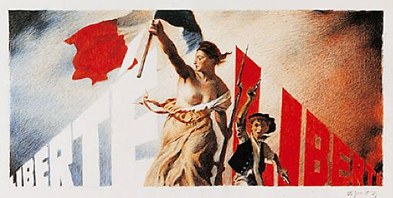DEAR LEONID Ilyich, I am turning to you because you are the only one who can help me out of my plight. I am 79 years old and live alone in Berdyansk, Saporoshye Region, 7 Red Partisans Street. I live in an old house without any creature comforts. Now that I am old and ill, I do not have the energy any more to fetch water from far, to fetch wood for heating the flat - at my age this is all beyond my capability.'
Ilya Kabakov's The Album of My Mother is his most personal and his bitterest work. It also establishes the perennial theme of his art, since its subject is the gap between Soviet propaganda and Soviet life, the painful contrast between the Utopian social ideals of the Communist state and the misery, the bureaucratic inefficiency, indifference or worse suffered by its citizens.
The work consists of some 90-plus pages of text, excerpts from the diary of the artist's ageing mother. The letter to Brezhnev with which it opens turns out to be a plea for rehousing, which fell on deaf ears. Ka-bakov ironically juxtaposes the documentary evidence of his mother's plight with selected images of ideal life, Soviet-style, taken mostly from Russian magazines of the 1950s. Myth-making, Stakhanovite photographs, or Soviet lifestyle propaganda - demonstrating, for example, the wide range of footwear available to your average Russian housewife circa 1955 - coexist with the harsher realities of a text that records a life of almost unremitting misery and privation.
The Album of My Mother, its leaves extracted and hung in sequence, runs around the circumference of Kabakov's idiosyncratic, challenging exhibition at the Riverside Gallery, '10 Albums, 10 Characters'. This show, along with the ICA's display of Kabakov installations, offers British audiences their first...

Comrades in Art
28-02-1989

